Tiny living is a polarizing topic that promises just as many dreamy pros as damning cons. The thought of a simpler life with no debt is enough to draw many in. Meanwhile, having to methodically choose belongings that truly matter or come to grips with living your days in a space smaller than the average bedroom is enough to turn most away.
No matter how many times you talk yourself out of it, it’s hard to deny the allure of all those cozy reading nooks and bedroom lofts online.
My girlfriend, Alex, and I have pursued living in a tiny house off and on for three years now—everything from working with a builder to build my dream house on wheels to converting a prefabricated storage shed into a livable space. With each effort, our enthusiasm was snuffed out during the lending process or by zoning and building code requirements, so we were forced to take a different approach. Through weeks of exploring countless alternatives, lots of careful consideration and toying with the idea of giving up entirely, we eventually found and purchased a vintage travel trailer that we hope to fully renovate and use to travel full-time.
Surprisingly, in all the time we spent researching and visiting tiny houses, we had never actually stayed in one. That’s why, we decided to spend a couple nights at the Mount Hood Tiny House Village in Oregon.
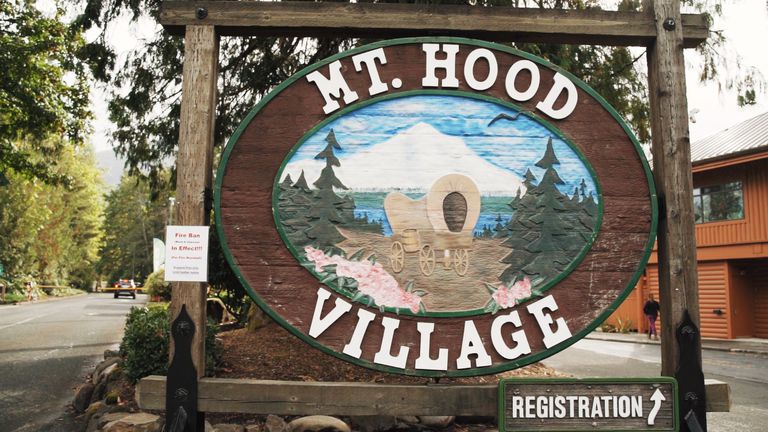
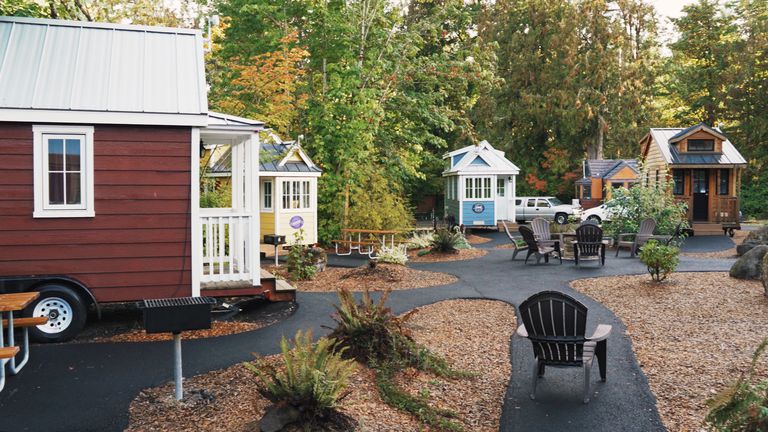
When dealing with a house with such a tiny footprint, there is only so much that can be done. You’ll have to opt for smaller appliances and—in many cases—skip them altogether. The refrigerator in the tiny house we stayed in was no larger than one you’d find in a hotel room. There was an induction stovetop yet no oven or microwave. Also missing were a washing machine, dryer, and dishwasher.
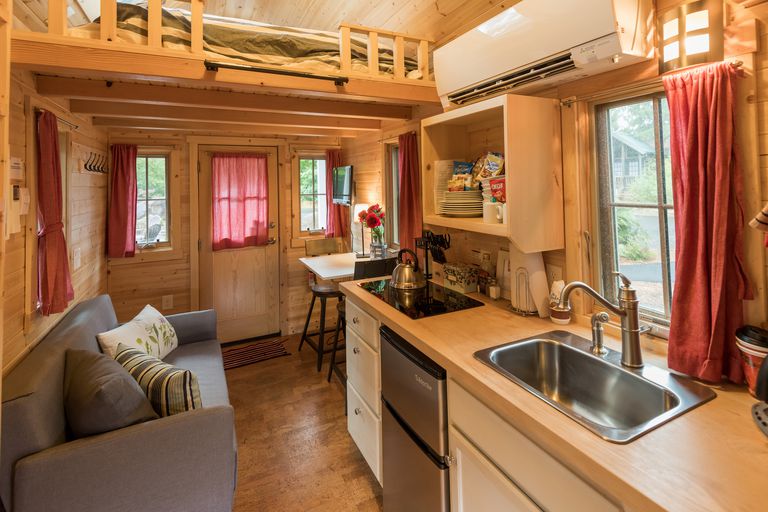
For most couples or families, these sacrifices wouldn’t fly. That’s precisely why layout and optimizing a space for your needs is so important. It’s crucial to make the most of every cubic inch in a tiny house.
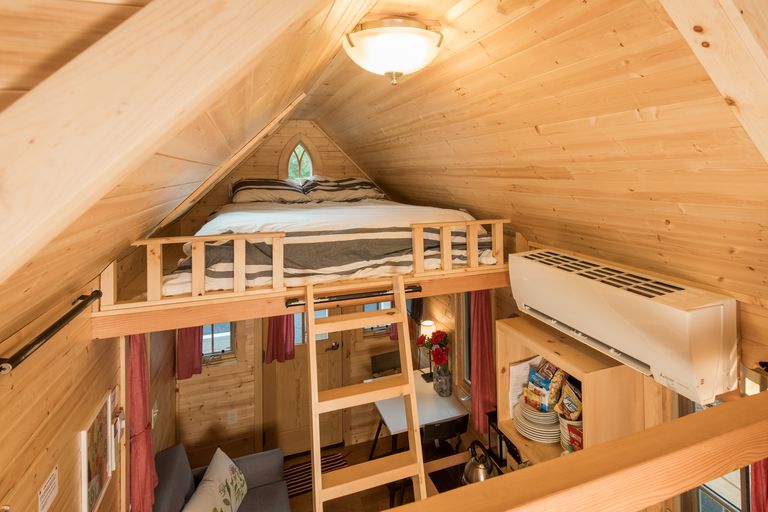
The houses featured in the Mount Hood Tiny House Village were all made by Tumbleweed Tiny Homes. Tumbleweed is a tiny house builder out of Colorado Springs, CO that specializes in capitalizing on such a small space and sneaking in clever optimizations in places you might not think of. From pull-out couches and Murphy tables to storage cabinets beneath each stair, they know how to make the most of a tiny footprint.
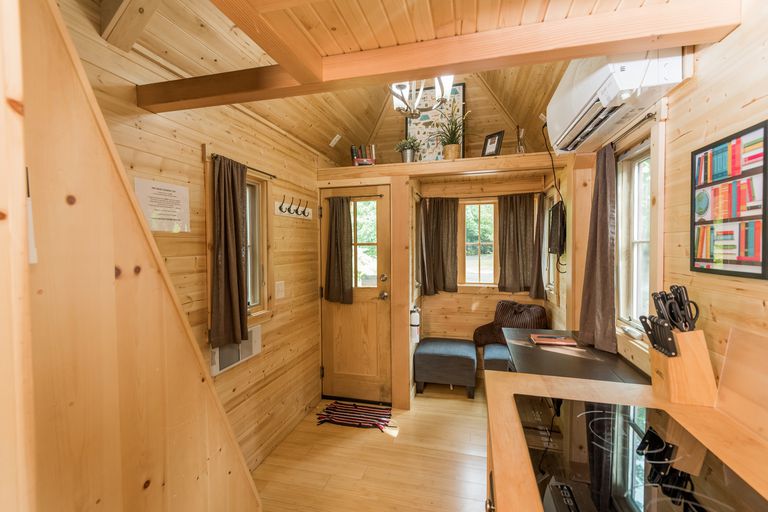
That said, within a minute of walking into the Lincoln model at the tiny house village, Alex and I both knew this was not the layout for us. We immediately began rattling off ideas of how we would do things differently.
Understandably, Lincoln (and every other tiny house in this village) were set up to accommodate sleeping more than your typical tiny house would. So vital space was sacrificed for a second sleeping area and a larger single loft than necessary. This made for an extra tiny bathroom and a very narrow hallway leading to the rear bedroom on the main floor. The porch also cuts into the great room, making the reading nook not quitewide enough to fully stretch out. Being an average height male, I had sit at a slight angle and hang my feet off the side of the seat.
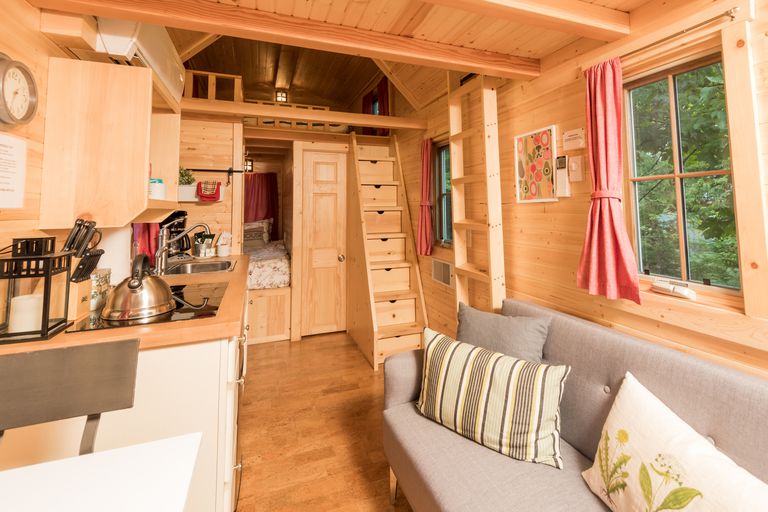
If we were going to be living in a space this small (and we will be in the relatively near future), we would certainly need to open up the living room area by foregoing such a small porch and nixing the rear bedroom. We would also make the bathroom considerably larger by not only using space that was the rear bedroom but also by opting to not put a separate sink in the bathroom and only having the kitchen sink. The missing dishwasher is something that we could live with, but in a tiny house, we would almost certainly spring for a combo washer and dryer. And an oven of some sort would be a necessity.
While, ultimately, we’re not able to live in a tiny house right now (and may never get the opportunity once we have children), staying just two nights in a tiny house gave us a new perspective on how we want to renovate our trailer. The current interior, manufactured in 1973, is pretty well optimized for a small living space, but it’s missing crucial elements, such as extra storage options, a dining area, and a large bed (travel trailers like ours often featured two or four twin-sized beds).
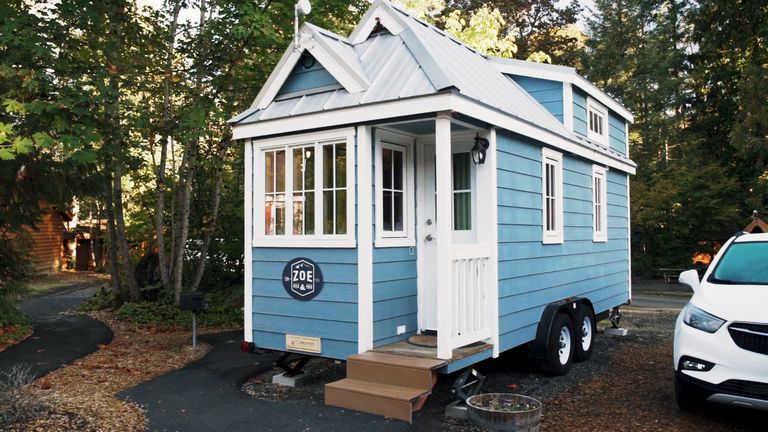
Not to mention, a travel trailer is a different challenge than a tiny house. For example, we have no loft to use as a sleeping area and we have to be conscious of the weight of all the materials we choose to install in the trailer. Tiny houses on wheels can be pulled behind a truck and moved around at will, but travel trailers are designed to do this, so weight is a serious limiting factor.
It’s easy to get swept away by the gorgeous photos of tiny living spaces all over Pinterest and Instagram. It’s easy to get sucked into the beautiful concept of totally owning your home in a year or two and pruning down your belongings to the bare essentials. It’s easy to assume you can adapt to the lifestyle or imagine yourself in a 200-square-foot home. But until you spend a few nights inside one, you really can’t be sure how you’ll feel.
If you’re at all interested in the tiny house or full-time RV life, I strongly recommend trying it out. Tiny houses and travel trailers are widely available for rent on Airbnb or through companies like Petite Retreats (the company behind the tiny house village at Mount Hood). Spend the cash to stay in one of these homes or RVs for two nights to a week. Use and get to know the space. Take notes and focus on what you like about the layout and the design, remember what you hate about it, and apply that to your own plans.
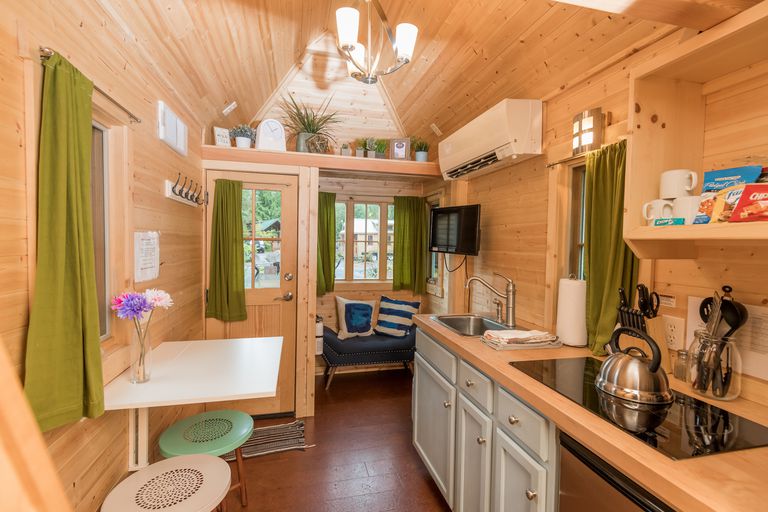
You may come away from the experience glad you didn’t waste any more time on the notion. Or you’ll be thankful that you decided to go with a ladder instead of bulky stairs or that you realized that living with a small bathroom isn’t something you actually want (seriously, this was one of the toughest parts of our time in Lincoln).
All said and done, this opportunity didn’t move the needle for us. It cemented what we already knew: Living tiny is a dream we hope to adopt someday. (And every car needs a heated steering wheel.) If anything, we wish we could have stayed in the village for several more nights and got to experience the other homes. Chances are, we’ll be test driving more tiny houses on Airbnb in Asheville soon.
